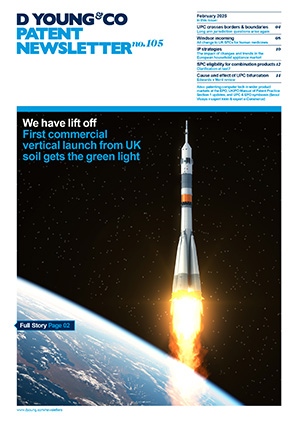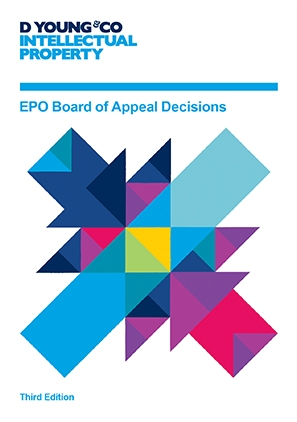Examination of AI inventions at the UKIPO: certainty at last?
In 2021 the UK Intellectual Property Office (UKIPO) invited comments from industry and the legal profession on the relationship between artificial intelligence (AI) and intellectual property. One particular theme that came out of the consultation is that respondents had a great desire for enhanced certainty in what AI inventions were patentable and felt that the current approach taken by UKIPO examiners was not fully consistent. In response, the UKIPO has now, for the first time, produced detailed guidance on how examiners should examine AI inventions.
The guidance is divided into two parts. The first part discusses the legal framework for how examination of AI inventions should be performed, and the second part provides a set of scenarios which provide practical illustrations not only of allowable and non-allowable subject-matter but also provides worked examples of how examiners should step through their reasoning.
The guidance takes as its starting point a definition of AI as being “Technologies with the ability to perform tasks that would otherwise require human intelligence, such as visual perception, speech recognition, and language translation”. The guidance confirms the basic framework that the UKIPO uses in assessing whether computer-implemented inventions should be considered as excluded subject-matter, namely the Aerotel test. The guidance primarily views compliance or failure of the Aerotel test through the lens of the AT&T signposts. These signposts provide five broad routes by which computer-implemented inventions can satisfy the Aerotel test, and in their current form are most commonly stated as follows:
- whether the claimed technical effect has a technical effect on a process which is carried on outside the computer
- whether the claimed technical effect operates at the level of the architecture of the computer; that is to say whether the effect is produced irrespective of the data being processed or the applications being run
- whether the claimed technical effect results in the computer being made to operate in a new way
- whether the program makes the computer a better computer in the sense of running more efficiently and effectively as a computer
- whether the perceived problem is overcome by the claimed invention as opposed to merely being circumvented.
The new guidance does not treat AI monolithically and indeed splits up AI inventions into three different categories. The primary division is between “applied AI” and “core AI” with “applied AI” being further divided into inventions that address problems external to the computer, and those that address problems relating to making the computer itself work better.
Applied AI: performing processes or solving problems lying outside the computer
As described in the guidance, the first category is entitled “Applied AI: performing processes or solving problems lying outside the computer”. The guidance sets out that the route to grant for these inventions lies in the first and fifth AT&T signposts. In this category, the scenarios list six examples of patentable subject-matter and three examples of non-patentable subject-matter.
On the positive side the scenarios explicitly confirm that the first signpost applies not only to inventions which control a physical entity outside the computer (for example, scenario 5 “Controlling a fuel injector in a combustion engine”) but also several examples where the connection to the real world is on the “input” side (for example, scenario 3: “Analysing and classifying movement from motion sensor data”). This is particularly helpful as examiners sometimes take an overly narrow view of the first signpost as only applying to control of external entities.
On the negative scenario side, the guidance confirms several aspects of long-held practice regarding the non-allowability of controlling a purely business/administrative process (for example, scenario 7: “Automated financial instrument trading”) as well as mere classification of computerised data (for example, scenario 9: “Identifying junk e-mail using a trained AI classifier”).
Applied AI: making computers work better
The next category is entitled “Applied AI: making computers work better”. The guidance sets out that the route to grant for these inventions lies primarily in the second and fourth signposts. Interestingly, in this category, the guidance did not list any examples of non-patentable subject-matter and listed three positive examples of patentable subject-matter. Helpfully, the scenarios provide us with one example that meets both the second and fourth signpost (scenario 10: “Cache management using a neural network”), one example that only meets the second signpost (scenario 11: “Continuous user authentication”) and one example that only meets the fourth signpost (scenario 12: “Virtual keyboard with predictive text entry”). The guidance also notes that each of these Scenarios would meet the fifth signpost. These three scenarios are extremely helpful as they span the full breadth of how computers can be made to work better, ranging from architecture-level cache handling to a user-visible keyboard interface.
Core AI
The final category “core AI” relates to inventions which do not specify any specific applications for their AI features but instead represent an advance in the field of AI itself.
The guidance sets out that the route to grant for these inventions lies primarily in the third signpost, noting that when the third signpost is met, the fifth signpost would also be met. As a high-level point, the guidance stresses the difficultly of relying on the third signpost noting that “there are few (if any) explicit examples of the positive application of signpost (iii) in decided case law” and accordingly “The IPO acknowledges that this means there is uncertainty about the sorts of effect a computer-implemented invention (or AI invention) must reveal [to meet the signpost]”. Having said that, the guidance provides a stab at what they predict should and should not be allowable providing three example scenarios of patentable subject-matter and three example Scenarios of non-patentable subject-matter.
Looking at the positive examples, it is notable that all three of these include some aspect of hardware interaction:
- scenario 16 (“Processing a neural network on a heterogeneous computing platform”) discusses adjusting clock speeds to allow heterogeneous elements to complete calculations at the same time;
- scenario 17 (“Special purpose processing unit for machine learning computations”) discusses a system that collates memory address locations for non-zero memory values; and
- scenario 18 (“A multiprocessor topology adapted for machine learning”) discusses the adaptation of a machine learning technique to a non-standard multiprocessor topology.
In contrast, the negatives are much more towards the software end of the spectrum where:
- both scenario 13 (“Optimising a neural network”) and scenario 14 (“Avoiding unnecessary processing using a neural network”) can be considered as reducing the computing resource required to run a neural network; and
- scenario 15 (“Active training of a neural network”) relates to the selection of training data.
As we have seen, while there are some aspects, especially “core AI”, where further certainty would be desirable, the new guidance provides a welcome increase in certainty when prosecuting AI inventions at the UKIPO. We look forward to the new guidance being applied by examiners over the coming months, with the expectation of increased consistency in handling AI inventions. In addition, the new guidance will help us work with applicants to adjust their patent prosecution strategies which should lead to an enhanced grant rate in this area. In the meantime, if you have any questions or concerns regarding this area your D Young & Co representative is here to help.
Examining patent applications relating to artificial intelligence (AI) inventions - the guidance
Read moreExamining patent applications relating to artificial intelligence (AI) inventions - the scenarios
Read more

